Moniek Bloks's Blog, page 17
April 26, 2025
Book News Week 18
Book News Week 18 – 28 April – 4 May 2025

Dianaworld: An Obsession
Hardcover – 29 April 2025 (US)
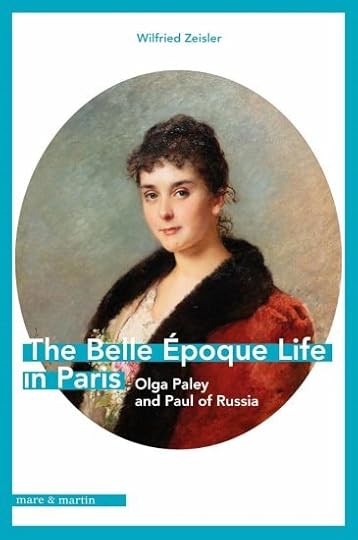
The Belle Époque Life in Paris: Olga Paley and Paul of Russia
Paperback – 29 April 2025 (US)
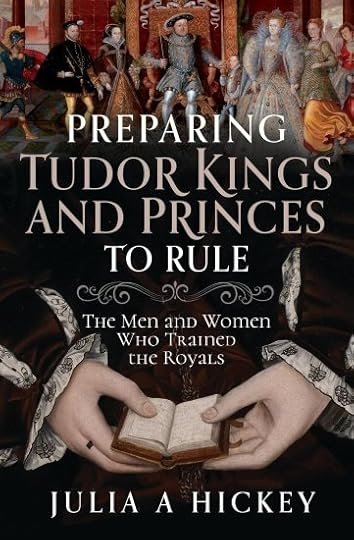
Preparing Tudor Kings and Princes to Rule: The Men and Women Who Trained the Royals
Hardcover – 28 April 2025 (US)
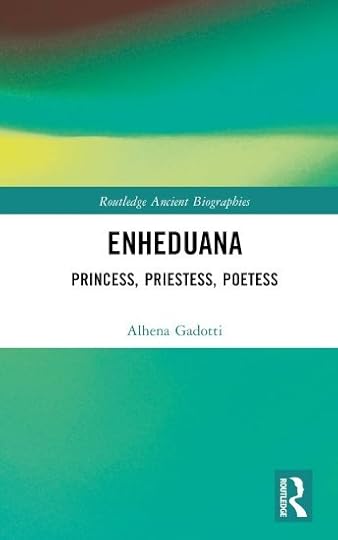
Enheduana: Princess, Priestess, Poetess (Routledge Ancient Biographies)
Hardcover – 30 April 2025 (US & UK)

Daughters of the North: Jean Gordon and Mary, Queen of Scots
Paperback – 30 April 2025 (UK)
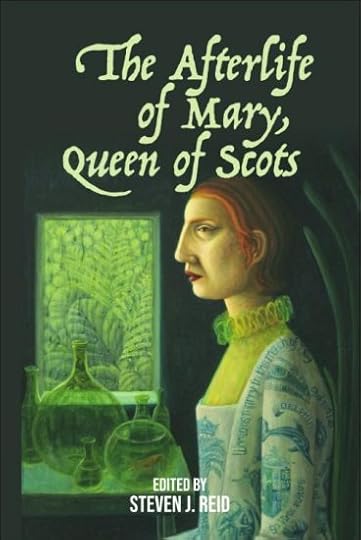
The Afterlife of Mary, Queen of Scots
Paperback – 1 May 2025 (UK)
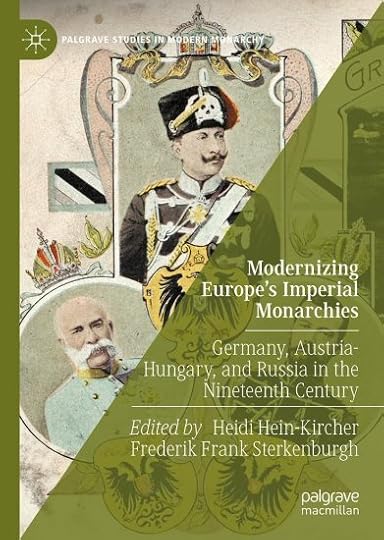
Modernizing Europe’s Imperial Monarchies: Germany, Austria-Hungary, and Russia in the Nineteenth Century (Palgrave Studies in Modern Monarchy)
Hardcover – 2 May 2025 (US & UK)
The post Book News Week 18 appeared first on History of Royal Women.
April 24, 2025
Crown Princess Mary’s Wedding Tiara
When Mary Donaldson married the future King Frederik X of Denmark, she wore a diamond tiara, which had been a gift from her new parents-in-law.
Embed from Getty ImagesThe tiara has a diamond heart and fleur-de-lis motifs, and as it was a gift, it is Mary’s personal property. Unfortunately, we do not know where the tiara originally came from.
Embed from Getty ImagesMary continued to wear the tiara after the wedding, and it can be combined with plenty of outfits. She had the tiara adjusted in 2011 to allow for a row of pearls to be added to the base and to add larger pearls on top. It can now be worn with or without the pearls. It can also be worn as a necklace. 1
Embed from Getty ImagesThe post Crown Princess Mary’s Wedding Tiara appeared first on History of Royal Women.
April 23, 2025
The Year of Queen Sālote Tupou III – The death of Queen Lavinia
Queen Sālote Tupou III of Tonga would hardly know her mother as she tragically passed away on 24 April 1902 at the age of just 23. Little Sālote was just two years old.
Queen Lavinia Veiongo Fotu had gone to visit Princess ʻOfakivavaʻu, who had once been considered as a bride for Queen Lavinia’s husband, King George Tupou II. She had contracted tuberculosis and eventually died in December 1901. Queen Lavinia also attended her funeral and may have caught the tuberculosis that would eventually kill her from Princess ʻOfakivavaʻu. However, she had been in delicate health since her daughter’s birth.
She travelled to Fafa Island, where the sea air and a seafood diet would hopefully improve her health. However, she returned to the palace at Nukuʻalofa in the middle of April without any improvement to her health. Because of her poor health, she and her husband declined to attend the coronation of King Edward VII in London. Queen Lavinia took to her bed and was able to receive visitors but her husband likely knew she wasn’t going to get better as he ordered work to begin on a “great terraced tomb.”1
Queen Lavinia died on 24 April 1902 at the palace. George was deeply affected by her death, and he honoured her with an immense funeral. She lay in state for four days and was buried at the royal cemetery of Mala’e Kula. Her husband would later be buried beside her.
The Sydney Morning Herald wrote of Lavinia, “The late queen was the embodiment of good nature and persons of all ranks were assured of a kind and courteous reception at her hands. She even caused Tupou to be a little more attentive to his duties in the matter of the reception of higher chiefs who, in the King’s absence, she would in no wise permit to depart before interviewing Tupou for whom she would send if necessary.”2
By Tongan custom, children are particularly attached to their mother and maternal relatives. Losing her mother was thus especially difficult for young Sālote. She also wasn’t very close to her maternal grandparents, and she did not speak warmly of them.3
Sālote was told that her mother prayed at the Royal Chapel each day at noon and so she often visited the chapel to reflect on her mother’s life.
Two years after Queen Lavinia’s death, a statue of her arrived by steamer from Italy. It was unveiled on her tomb and it cost almost £1000. At the feet of the life-size statue is a small grieving Princess.
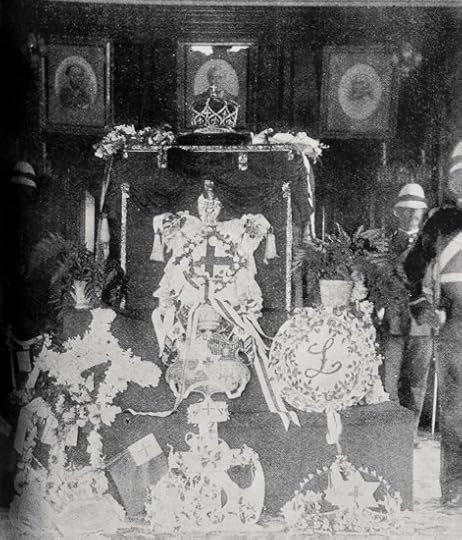 Auckland Libraries Heritage Collections AWNS-19020612-05-04
Auckland Libraries Heritage Collections AWNS-19020612-05-04In 1952, a new church was opened, which had two stained glass windows; one of them was in memory of Queen Lavinia, and this had been arranged by Sālote.
The post The Year of Queen Sālote Tupou III – The death of Queen Lavinia appeared first on History of Royal Women.
April 22, 2025
The royal women buried at St. Peter’s Basilica
There are over 100 tombs in St. Peter’s Basilica in Vatican City. Many of these are located underneath the Basilica in the crypt, and as you may have guessed, the majority of these tombs are of popes. However, there are also four royal women buried among them.
Matilda, Countess of Tuscany
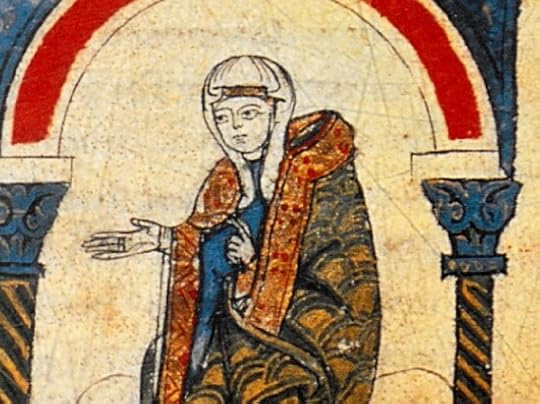 (public domain)
(public domain)The first royal woman to be buried in St. Peter’s Basilica was Matilda, Countess of Tuscany, who was also known as the Great Countess. Matilda was the daughter of Boniface III, Margrave of Tuscany and Beatrice of Lorraine. Her two siblings, Beatrice and Frederick, died shortly after their father, leaving Matilda as the heiress. Despite two marriages, her only child died just a few weeks after her birth. She was considered to be a close confidant of Pope Gregory VII, and he even took refuge at her family’s stronghold, Canossa Castle. She convinced the Pope to see Holy Roman Emperor Henry IV, who had previously been excommunicated. Matilda granted the Pope all of her domains in 1079 in defiance of the claims of the Emperor. The Emperor later defeated Matilda and the Pope in battle, and the following years were a series of battles. Pope Gregory VII died in 1085, and Pope Victor III was chosen in his place. He died in 1088 and was replaced by Pope Urban II. In 1094, Matilda helped Henry’s second wife, Eupraxia of Kyiv, find refuge. She was also able to help restore Pope Urban II to Rome. Emperor Henry IV was forced to abdicate in 1105, and he died the following year. His son became Emperor Henry V. Matilda kept a close relationship with the church for her entire life, and she often had clergymen around her to offer advice. She often made donations of money and land to the church as well. She died on 24 July 1115, and Henry V, Holy Roman Emperor, easily took control of her lands.
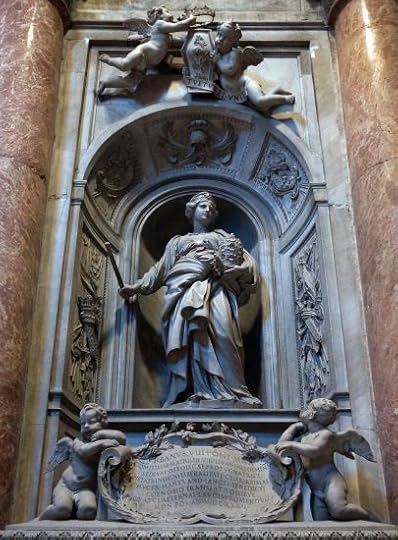 Matilda’s tomb by Bede735 – Own work, CC BY-SA 3 via Wikimedia Commons
Matilda’s tomb by Bede735 – Own work, CC BY-SA 3 via Wikimedia CommonsMatilda was first buried in the Abbey of San Benedetto in Polirone. Pope Urban VIII had her body moved to Rome and interred in the Castel Sant’Angelo in 1633. She was moved for the last time in 1645 to St. Peter’s Basilica, and she holds the honour of being the first woman to be buried there.
Christina, Queen of Sweden
 (public domain)
(public domain)Christina was born on 18 December 1626 as the only surviving child of Gustavus Adolphus, King of Sweden, and Maria Eleonora of Brandenburg. Following her father’s death on the battlefield on 6 November 1632, Christina became Queen regnant of Sweden. She was under the regency of Axel Oxenstierna until 1644 and was cared for by her aunt, Catherine. She received an excellent education and was known to be a good student. She became a supporter of academics and the arts following her majority in 1644. She felt a distaste for marriage and spent many hours writing and studying, often well into the night. She slept very little and was known for her bedhead. She became interested in the Catholic faith, and in 1652, she decided to become a Catholic. In 1654, she revealed that she planned to abdicate and nominated her first cousin Charles Gustav as her heir.
The abdication ceremony took place on 6 June 1654. Christina left Sweden a few days later and initially travelled to Germany. She later settled in Antwerp for four months. On 24 December 1654, Christina converted to the Catholic faith in the chapel of the Palace of Coudenberg in Brussels, and she chose the name Christina Alexandra. The following September, she set off for Rome. She met with Pope Alexander VII and was given her own wing inside the Vatican. She eventually settled in the Palazzo Farnese, but she continued to travel. The Palazzo Riario would be where she would spend the rest of her life. She returned to Sweden twice after the King had died.
 Christina’s tomb (public domain)
Christina’s tomb (public domain)She died on 19 April 1689 in Rome at the age of 62. She had asked for a simple burial in the Pantheon, but she was buried in St. Peter’s Basilica.
Maria Clementina Sobieska
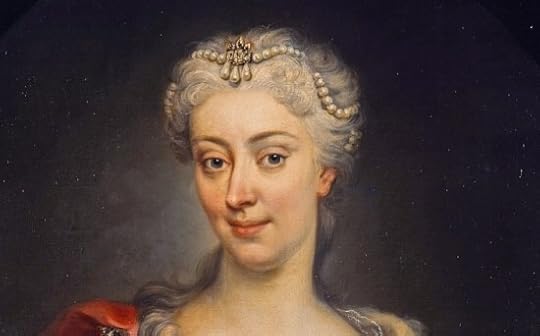 (public domain)
(public domain)Maria Clementina Sobieska was born on 18 July 1702 as the fifth but third surviving child of James Louis Sobieski, a son of John III Sobieski, King of Poland, and Hedwig Elisabeth of Neuburg. On 3 September 1719, she married James Francis Edward Stuart, the eldest son of the exiled King James II and VII of England, Scotland and Ireland, the last Catholic monarch. At the request of Pope Clement XI, the couple lived in Rome, where they were recognised as King and Queen. They were given Palazzo Muti in Rome and had a country house. They were also given an allowance by the Catholic Church. They had two sons together, Charles Edward (born 1720) and Henry Benedict (born 1725). Maria Clementina left her husband after the birth of her last child and went to live in the convent of St. Cecilia in Rome. She had accused her husband of adultery, and although they officially reconciled, they never lived together again.
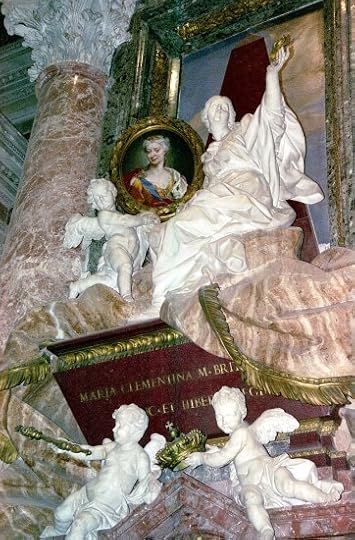 Maria Clementina’s tomb (public domain)
Maria Clementina’s tomb (public domain)Maria Clementina died on 18 January 1735 at the age of 32 of scurvy. She was interred in St. Peter’s Basilica and was given a state funeral on the orders of Pope Clement XII.
Charlotte, Queen of Cyprus
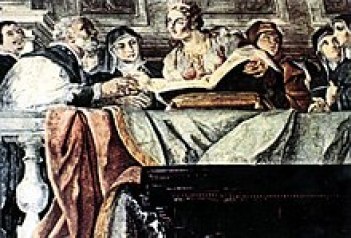 (public domain)
(public domain)Charlotte was born on 28 June 1444 as the eldest and only surviving child of John II of Cyprus and Helena Palaiologina. She also had an illegitimate half-brother named James. In 1456, she was married to John of Coimbra, but he died a year later after a short illness. Her father died in 1458, and Charlotte succeeded him as Queen regnant of Cyprus. On 7 October 1459, she married her second husband, Louis of Savoy, Count of Geneva. They had one son together, who died not long after his birth. Charlotte had a difficult time on the throne, as she was being challenged by her half-brother, James. He eventually forced her and Louis to flee to Rome in 1463, and James was crowned King the following year. She lived in the Convertendi Palace and Piazza Scossacavalli in Rome. She tried to reclaim her throne with papal support, but she was unsuccessful.
Charlotte died on 15 July 1487 in Rome. She was buried in the chapel of Saint Andrew and Saint Gregory in St. Peter’s Basilica, and her remains were moved to the grottoes in 1610.
Two non-royal women are also buried in St. Peter’s Basilica: St. Petronilla and Agnesina Colonna Caetani.
The post The royal women buried at St. Peter’s Basilica appeared first on History of Royal Women.
April 20, 2025
Book Review: Name Unknown: The Life of a Rusian Queen by Christian Raffensperger
There have been many women in history who have remained nameless. The Kingdom of Rus has its first share of Queens without a name. Kyivan Rus’ found its centre in Kyiv and could be found in Eastern Europe from the 9th century until the 13th century.
Name Unknown: The Life of a Rusian Queen by Christian Raffensperger follows the lives of these unnamed Queens through the various stages of their lives. We get tantalising close to these women as sources reveal their generosity, charitable acts, the children they had, and the men they married, while the sources never reveal their names.
The book is easy to read despite hardly any of the women having names. It is certainly an interesting way to look at these women, and they might have otherwise remained overlooked for many more years.
Name Unknown: The Life of a Rusian Queen by Christian Raffensperger is available now in the UK and the US.
The post appeared first on History of Royal Women.
April 19, 2025
Book News Week 17
Book News week 17 – 21 April – 27 April 2025

The Cleopatras: Discover the powerful story of the seven queens of Ancient Egypt!
Paperback – 24 April 2025 (UK)
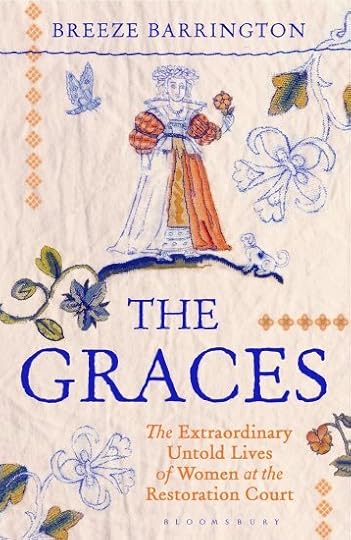
The Graces: The Untold Lives of the Women Who Transformed the Restoration Court
Hardcover – 24 April 2025 (UK)

Vagabond Princess: The Great Adventures of Gulbadan
Paperback – 22 April 2025 (UK)
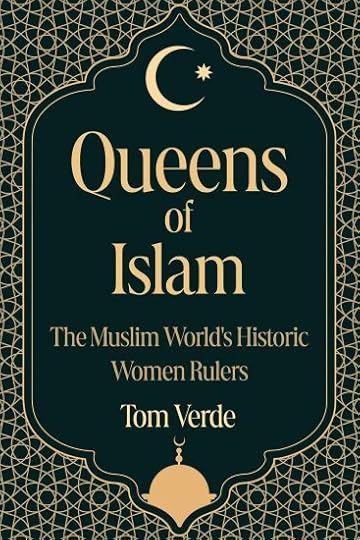
Queens of Islam: The Muslim World’s Historic Women Rulers
Paperback – 22 April 2025 (UK)

Hitler’s Aristocrats: The Secret Power Players in Britain and America Who Supported the Nazis, 1923–1941
Paperback – 22 April 2025 (US)
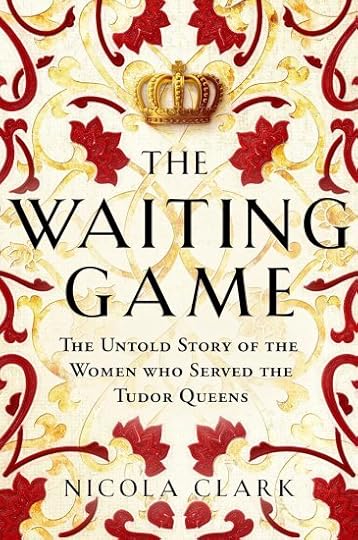
The Waiting Game: The Untold Story of the Women Who Served the Tudor Queens
Paperback – 24 April 2025 (UK)

The Belle Époque Life in Paris: Olga Paley and Paul of Russia
Paperback – 21 April 2025 (UK)
The post Book News Week 17 appeared first on History of Royal Women.
April 18, 2025
Review: Counterplay – A century of female kingship exhibition
Counterplay (Tegenspel) – A Century of Female Kingship is the new exhibition at the Loo Palace in Apeldoorn.
The exhibition tells the story of the Netherlands’ three reigning Queens – Queen Wilhelmina, Queen Juliana and Queen Beatrix – against a backdrop of significant social changes and public perceptions of women.
As Queens, the women were forced to play double roles. They were the monarch, but they were also responsible for holding up the traditional image of a mother. Queen Wilhelmina succeeded her father at a time when women were not even allowed to vote, while Queen Juliana became the first Dutch royal to attend university. Her daughter, Queen Beatrix, modernised the monarchy.
Click to view slideshow.The exhibition begins with a lovely piece of art before moving on to our first Queen – Wilhelmina. The stories are told on large murals in both Dutch and English, making it very accessible to foreign visitors. There are screens with telephones so that the audio isn’t blasted all over the exhibition. The setup is quite spacious, and even though it was very busy, I could still see everything well.
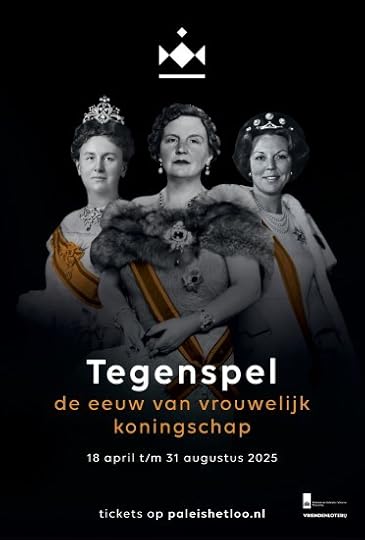 Photo: Paleis Het Loo
Photo: Paleis Het LooI did feel the exhibition lacked a bit of a personal touch. For such a grand exhibition, there are relatively few items actually on display, which makes it miss the personal connection with the three Queens.
The exhibition comes with a few pieces of merchandise, which are available in the shop on site. However, there is no accompanying publication, even though this subject would have been perfect for it!
Overall, you can never go wrong with a day at the Loo Palace, as there is also the permanent House of Orange exhibition and the magnificent palace itself. However, I am afraid this exhibition didn’t quite live up to my expectations.
The exhibition will run until 31 August 2025. Plan your visit here.
The post Review: Counterplay – A century of female kingship exhibition appeared first on History of Royal Women.
April 17, 2025
Queen Fabiola’s Spanish Wedding Gift Tiara
The Spanish Wedding Gift Tiara was given to the future Queen Fabiola of Belgium as a wedding gift by the Spanish people.
Embed from Getty ImagesFabiola received the tiara from the hands of Carmen Franco, the wife of Francisco Franco, on 5 December 1960. This also happened to be Fabiola’s birthday.
Embed from Getty ImagesThe tiara features diamond strawberry leaves and was likely inspired by the ducal coronets worn by Spanish aristocrats. The tiara was quite versatile, and it could be worn as a coronet, a wreath-style tiara or even a necklace. The stones in the leaves could be worn with aquamarines, emeralds or rubies.
Embed from Getty ImagesAlthough she did not wear her new tiara for her wedding, she chose the Nine Provinces Tara for that, but she did wear the Spanish Wedding Gift Tiara for two pre-wedding events.
Embed from Getty ImagesIt became a much-loved piece and Fabiola wore it often, in various settings.
Embed from Getty ImagesThe tiara hasn’t been seen since Fabiola’s death.1
The post Queen Fabiola’s Spanish Wedding Gift Tiara appeared first on History of Royal Women.
April 15, 2025
Princess Luyuan – The first Princess of the Han Dynasty
Princess Luyuan (also known as Princess Yuan of Lu) was the first Princess of the Han Dynasty.[1] She was the only daughter of Emperor Gaozu and Empress Dowager Lu Zhi of the Western Han Dynasty. She was the full-blooded sister of Emperor Hui and half-sibling of Emperor Wen. She was also the mother of Empress Zhang Yan. Even though her early life was full of hardships, Princess Luyuan was able to gain prestige as a Queen Mother.[2]
In circa 217 B.C.E., Princess Luyuan was born. She was the only daughter of Emperor Gaozu and Empress Dowager Lu Zhi of the Western Han Dynasty. She had a full-blood brother named Liu Ying (the future Emperor Hui). When she was born, her father, Liu Bang, (the future Emperor Gaozu) was still a commoner.[3] When Liu Bang left to take part in a rebellion against the Qin Empire, he left his family in Pei County.[4] Three years later, Liu Bang became the King of Han, and Luyuan became a princess.[5]
From 206-202 B.C.E., King Liu Bang of Han launched a war against the Hegemon-King, Xiang Yu of Chu. In 204 B.C.E., Princess Luyuan and Prince Liu Ying’s carriage was being pursued by the State of Chu’s army.[6] One of Liu Bang’s supporters, Duke Teng, ordered them to get out of the carriage and replaced the carriage with decoys.[7] Princess Luyuan and Prince Liu Ying were able to escape.[8] They were eventually captured by the State of Chu’s army and became hostages with their mother.[9] They would remain hostages of the State of Chu’s army for two years until King Liu Bang defeated the Hegemon-King, Xiang Yu.[10]
In 202 B.C.E., Liu Bang ascended the throne as Emperor Gaozu of the Western Han Dynasty. Emperor Gaozu decided to marry Princess Luyuan to the Xiongnu Khan (also known in the West as the Huns).[11] Empress Lu Zhi cried and pleaded with Emperor Gaozu not to marry Princess Luyuan to the Xiongnu Khan, but Emperor Gaozu ignored her pleas.[12] It was not until Emperor Gaozu realized that he could not part with Princess Luyuan that he finally cancelled her marriage to the Xiongnu Khan.[13] Princess Luyuan then married Prince Zhang Ao, the son of Zhang Er (one of Han’s greatest generals and the former King of Zhao).[14] Upon her marriage, Luyuan became a Princess of Zhao.[15] Princess Luyuan gave birth to a daughter named Zhang Yan in 202 B.C.E.
In 198 B.C.E., two of Emperor Gaozu’s councillors asked Prince Zhang Ao to participate in a conspiracy to kill Emperor Gaozu.[16] Prince Zhang Ao refused because of his steadfast loyalty to Emperor Gaozu.[17] When the plot was revealed, they arrested the conspirators, including Prince Zhang Ao.[18] Emperor Gaozu realised that Prince Zhang Ao was not involved in the assassination attempt.[19] He pardoned Zhang Ao but demoted him to Marquis of Xuanping.[20] In circa 194 B.C.E., King Daohui of Qi (Princess Luyuan’s half-brother) gifted Princess Luyuan the Chenyang Commandery and made her the Queen Dowager of Qi.[21]
In 195 B.C.E., Emperor Gaozu died. He was succeeded by his son, Prince Liu Ying, as Emperor Hui. Empress Lu Zhi was made Empress Dowager. Emperor Hui had no interest in state affairs and lived a life of pleasure and indulgence.[22] His mother, Empress Dowager Lu Zhi, was the true ruler.[23] Empress Dowager Lu Zhi wanted to strengthen her power and secure her son’s throne by choosing a woman from her own clan to marry Emperor Hui.[24] She chose Princess Luyuan’s daughter, Zhang Yan.[25]
In 191 B.C.E., Zhang Yan married Emperor Hui and was invested as Empress of China. Empress Zhang Yan was eleven years old, and Emperor Hui was her uncle.[26] Empress Zhang Yan’s marriage was considered incest in the Han Dynasty.[27] However, Empress Dowager Lu Zhi was so powerful that no one objected to the marriage.[28] The marriage would prove to be short-lived.[29] It would last only three years.[30]
On 26 September 188 B.C.E., Emperor Hui died and left Empress Zhang Yan a widow. A year later, in 187 B.C.E., Princess Luyuan died.[31] She was buried with the status befitting a Queen Dowager.[32] In 182 B.C.E., Princess Luyuan’s husband, Zhang Ao, died.[33] Zhang Ao is buried next to Princess Luyuan near the tomb of Emperor Hui in Anling.[34]
While there is not a lot of information about Empress Dowager Lu Zhi’s only daughter, Princess Luyuan, it is clear that she led a turbulent life.[35] As the daughter of Emperor Gaozu, Princess Luyuan was captured by the State of Chu and became a hostage for two years.[36] Her father considered marrying her to the Xiongnu Khan.[37] She was forced to marry her daughter, Empress Zhang Yan, to her own brother, Emperor Hui.[38] However, her half-brother, King Daohui, made her Queen Dowager of Qi.[39] During the reigns of Emperor Gaozu and Emperor Hui, Princess Luyuan was able to achieve respect and prestige.[40]
Sources:
iMedia. (n.d.). “The first Princess of the Western Han Dynasty – Princess Lu Yuan, the only daughter of Lu Zhi”. Retrieved on October 30, 2024 from https://min.news/en/history/dde317e45....
iNews. (n.d.). “Princess Lu Yuan, the most legendary princess in history”. Retrieved on October 30, 2024 from https://inf.news/en/history/d9b3cb7a0....
iNews. (n.d). “What kind of person is Princess Lu Yuan, the only daughter of Lu Zhi, and what kind of life situation does she have?” Retrieved on October 30, 2024 from https://inf.news/ne/history/07cb62be0....
McMahon, K. (2013). Women Shall Not Rule: Imperial Wives and Concubines in China from Han to Liao. NY: Rowman and Littlefield.
Zang, J. (2015). “Zhang Yan, Empress of Emperor Hui”. Biographical Dictionary of Chinese Women: Antiquity Through Sui, 1600 B.C.E. – 618 C.E.. (L. X. H. Lee, Ed.; A. D. Stefanowska, Ed.; S. Wiles, Ed., C. Tam, Trans.). NY: Routledge. pp. 241-242.
[1] iMedia, n.d. “The first Princess of the Western Han Dynasty – Princess Lu Yuan, the only daughter of Lu Zhi”
[2] iNews, n.d., “Princess Lu Yuan, the most legendary princess in history”
[3] iMedia, n.d. “The first Princess of the Western Han Dynasty – Princess Lu Yuan, the only daughter of Lu Zhi”
[4] iMedia, n.d. “The first Princess of the Western Han Dynasty – Princess Lu Yuan, the only daughter of Lu Zhi”
[5] iMedia, n.d. “The first Princess of the Western Han Dynasty – Princess Lu Yuan, the only daughter of Lu Zhi”
[6] iMedia, n.d. “The first Princess of the Western Han Dynasty – Princess Lu Yuan, the only daughter of Lu Zhi”
[7] iMedia, n.d. “The first Princess of the Western Han Dynasty – Princess Lu Yuan, the only daughter of Lu Zhi”
[8] iMedia, n.d. “The first Princess of the Western Han Dynasty – Princess Lu Yuan, the only daughter of Lu Zhi”
[9] iMedia, n.d. “The first Princess of the Western Han Dynasty – Princess Lu Yuan, the only daughter of Lu Zhi”
[10] iMedia, n.d. “The first Princess of the Western Han Dynasty – Princess Lu Yuan, the only daughter of Lu Zhi”
[11] iMedia, n.d. “The first Princess of the Western Han Dynasty – Princess Lu Yuan, the only daughter of Lu Zhi”
[12] iMedia, n.d. “The first Princess of the Western Han Dynasty – Princess Lu Yuan, the only daughter of Lu Zhi”
[13] iMedia, n.d. “The first Princess of the Western Han Dynasty – Princess Lu Yuan, the only daughter of Lu Zhi”
[14] iMedia, n.d. “The first Princess of the Western Han Dynasty – Princess Lu Yuan, the only daughter of Lu Zhi”
[15] Zang, 2015
[16] Zang, 2015
[17] Zang, 2015
[18] Zang, 2015
[19] Zang, 2015
[20] Zang, 2015
[21] iNews, n.d.,“Princess Lu Yuan, the most legendary princess in history”
[22] Zang, 2015
[23] Zang, 2015
[24] Zang, 2015
[25] Zang, 2015
[26] McMahon, 2013
[27] Zang, 2015
[28] Zang, 2015
[29] Zang, 2015
[30] Zang, 2015
[31] iNews, n.d. “What kind of person is Princess Lu Yuan, the only daughter of Lu Zhi, and what kind of life situation does she have?”
[32] iMedia, n.d. “The first Princess of the Western Han Dynasty – Princess Lu Yuan, the only daughter of Lu Zhi”
[33] iNews, n.d. “What kind of person is Princess Lu Yuan, the only daughter of Lu Zhi, and what kind of life situation does she have?”
[34] iMedia, n.d. “The first Princess of the Western Han Dynasty – Princess Lu Yuan, the only daughter of Lu Zhi”
[35] iNews, n.d.,“Princess Lu Yuan, the most legendary princess in history”
[36] iMedia, n.d. “The first Princess of the Western Han Dynasty – Princess Lu Yuan, the only daughter of Lu Zhi”
[37] iMedia, n.d. “The first Princess of the Western Han Dynasty – Princess Lu Yuan, the only daughter of Lu Zhi”
[38] McMahon, 2013
[39] iNews, n.d.,“Princess Lu Yuan, the most legendary princess in history”
[40] iNews, n.d.,“Princess Lu Yuan, the most legendary princess in history”
The post Princess Luyuan – The first Princess of the Han Dynasty appeared first on History of Royal Women.
April 13, 2025
The reduction of the Japanese Imperial Family during the American occupation
Following Japan’s surrender after the Second World War, there were calls for Emperor Hirohito to step down and be tried as a war criminal. Others feared unrest in Japan if this happened, and so a middle ground was sought. The Americans occupied Japan from its surrender on 2 September 1945 until the Treaty of San Francisco took effect on 28 April 1952.
Political manoeuvring ensued to prevent Emperor Hirohito from being implicated. Author and history John W. Dower wrote, “This successful campaign to absolve Hirohito of war responsibility knew no bounds. Hirohito was not merely presented as being innocent of any formal acts that might make him culpable to indictment as a war criminal, he was turned into an almost saintly figure who did not even bear moral responsibility for the war.”1
On New Year’s Day 1946, Emperor Hirohito published a statement in which he repudiated any claim to divinity. It said, “The ties between us and our people have always stood upon mutual trust and affection. They do not depend on mere legends and myths. They are not predicated on the false conception that the Emperor is divine and that the Japanese people are superior to other races and fated to rule the world.”2
With the Emperor no longer a divine being and merely a symbol of the state, more changes were to come. In 1947, a new Imperial House Law came into effect under the new mostly American-written3 Constitution.4
The new law drastically restricted membership of the Imperial Family. Only Emperor Hirohito’s immediate family, his wife, his two sons, his mother, and his three brothers, along with their families, remained. His four daughters were initially included, but once they married, they ceased to be Princesses and became commoners. Article 12 of the new Imperial House Law states, “In case a female of the Imperial Family marries a person other than the Emperor or the members of the Imperial Family, she shall lose the status of the Imperial Family member.”5
The eleven cadet branches (shinnōke and ōke) of the Imperial Family had 51 members who had to renounce their Imperial status. They were removed from the Imperial household register and became commoners on 14 October 1947.6 With the limitation that Princesses could only marry within the family, the family became smaller and smaller. The new law also upheld that only men could succeed to the throne.
Emperor Hirohito gathered all the imperial family members from the cadet branches to inform them that he would be forced to remove their imperial status. The new Constitution stated that all the property of the Imperial Household belonged to the state and so they no longer had the financial resources to support the cadet branches. Of these 51 family members, 26 had been men who were in the line of succession. The Prime Minister noted that there was no need for concern for the succession at the time. There were still six men in the line of succession.7
Out of the 51 family members, 40 received one-off payments. These payments were not for those with military records, and the total was ¥47.5 million. Several days later, the Emperor had a meal with those who were leaving the family, and he expressed his wish for ongoing warm ties.8
It was a great deal of change for the former members of the imperial family. Prince Fushimi, who was 15 years old and became plain Fushimi Hiroaki, later wrote, “We had to pay a huge, unprecedented amount of tax, and the one-off sum we received was decided unilaterally, and soon disappeared. So, the former imperial family members had to sell to live. My branch’s land became the Hotel New Otani, and that belonging to the Takeda-no-miya became the Grand Prince Hotel Takanawa. But some branches had lived on Ministry of the Imperial Household land. For example, the Kaya branch really struggled to get by.”9
The former Prince also wrote that others were inexperienced in business and thus lost their assets or became easy prey for criminals.
Princess Shigeko, the Emperor’s eldest daughter, would later tell a magazine that these hard times had “allowed her to find human happiness for the first time.”10 She was then known as Shigeko Higashikuni.
It wasn’t easy for those who remained in the Imperial family either. Setsuko, Princess Chichibu, who was the wife of one of the Emperor’s brothers and who had also attended the farewell meal, later wrote, “‘Let us always keep in touch,’ said the Emperor, raising his glass, and when in reply, the now former Prince Morimasa Nashimoto raised his, saying, ‘I pray for the continued prosperity of the Imperial family.’ I was choked with emotion, and at the same time, suddenly aware of the weight of responsibility now resting upon those few of us who officially remained imperial.”11
Besides the shinnōke and ōke branches, the Japanese peerage (azoku) and the warrior families (shizoku) lost their status in October 1947.
The post The reduction of the Japanese Imperial Family during the American occupation appeared first on History of Royal Women.



